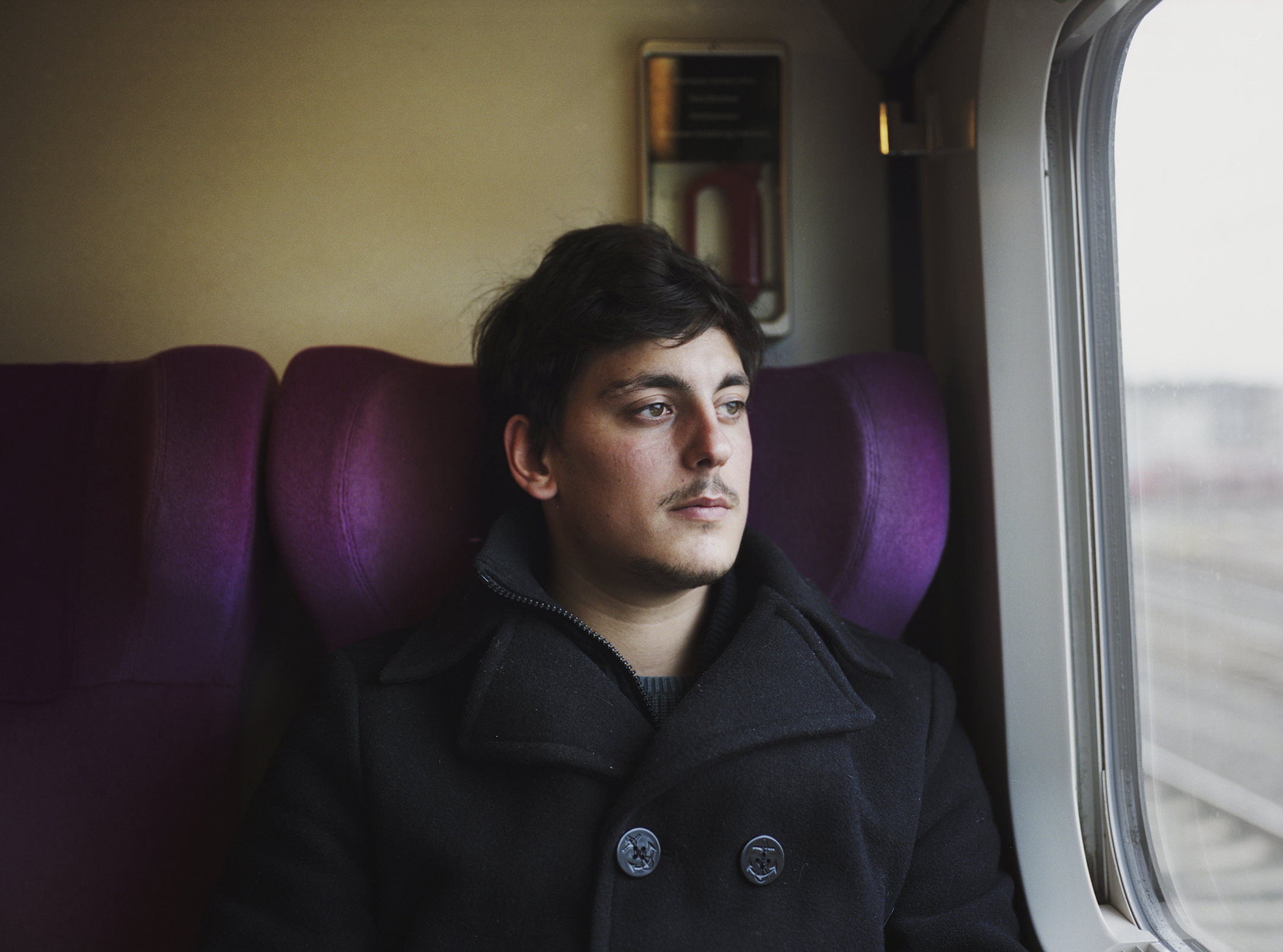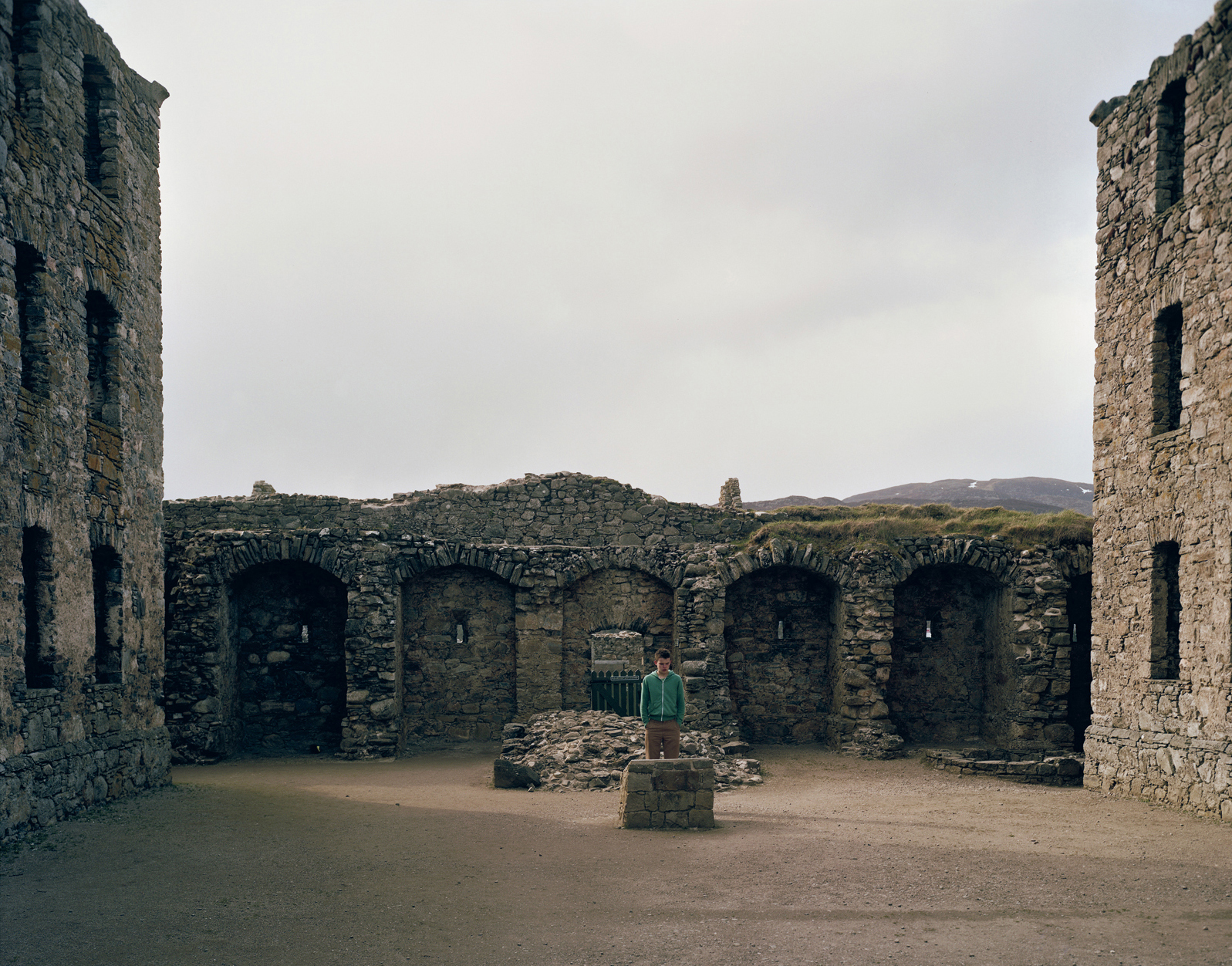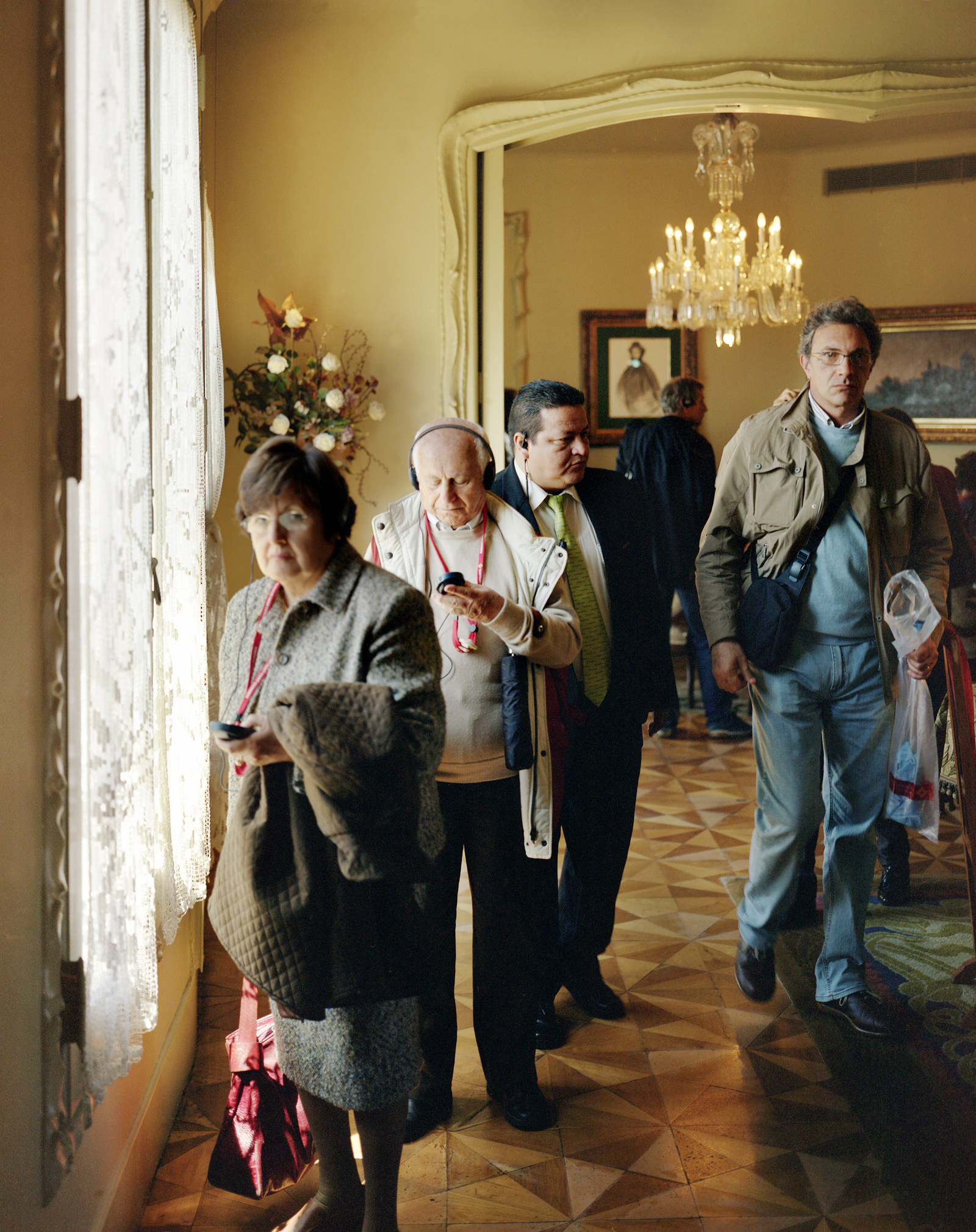︎︎︎


Antwerp, Belgium. 1945. /
Castrol GTX2 / Untitled
Selected Work / Blikfabriek / Video

J. Near Cologne, Germany. Article 50
 Ines. Belgium. Article 50
Ines. Belgium. Article 50My father lived in Leipzig and was always very opposed to the system, always wanting to get out. My parents got divorced when I was three and he married again. If you had relatives in the West you could go and visit them, and so his new wife went to visit her Aunt who had an 80th birthday or something. They had agreed in advance that she would not come back and that he would request ‘family reunification’. Anything could happen then.
Some people were refused and couldn’t leave ever, or they said that you could leave immediately, or you had to wait a couple of months, or years even, and then another option was that you just dissappeared, you know? They put you away.
It was difficult for him but he eventually got the notice that he could leave but had to leave the next day. He took the train from Leipzig to Ludvigslust to say goodbye to me first. I went to the station to meet him on my bike, I had this green bike, and he was walking next to me. He couldn’t stay long because he had to catch the last train back so we had a little talk and then we walked back to the station. At some point we stopped on the street and he said ‘I have a present for you’ and he brought out this little box with this golden necklace and he said I bought this for you and said it was very special and expensive and I was so flabbergasted.
It was difficult for him but he eventually got the notice that he could leave but had to leave the next day. He took the train from Leipzig to Ludvigslust to say goodbye to me first. I went to the station to meet him on my bike, I had this green bike, and he was walking next to me. He couldn’t stay long because he had to catch the last train back so we had a little talk and then we walked back to the station. At some point we stopped on the street and he said ‘I have a present for you’ and he brought out this little box with this golden necklace and he said I bought this for you and said it was very special and expensive and I was so flabbergasted.
I was thinking what am I going to do with this? By that time I had realised that I probably wouldn’t see him again and he gives me this necklace? I hated gold. I loved silver and he gave me a gold necklace. I remember all the years I kept the necklace in the box. I never took it out I just put it in the cupboard and I think I looked at it once again later on. But I hated that necklace. I don’t have it anymore. I don’t even know what happened to it. For me it was a symbol, first of all of not understanding each other, and second him really never understanding you know, that he was happy. For him that was a happy ending. He could leave. We couldn’t.’
Article 50
Article 50

The Marienbrücke over the Inn near its confluence with the Ilz and the Danube.
Passau, Germany. Article 50

The Menin Gate. Ypres, Belgium.
The Reliquary
 The McCauley Family. Voting NO. Kingussie.
The McCauley Family. Voting NO. Kingussie. A9. On Scottish Independence

Angus Brown. Voting NO. Ruthven Barracks.
A9. On Scottish Independence
A9. On Scottish Independence

Elaine Bruce. Voting YES. Newtonmore.
The A9. On Scottish Independence
In 1981 and 1982, photographer Paul Graham travelled up and down the A1, the longest road in the UK, documenting his journey through the heart of Britain with the series A1, The Great North Road. London-based photographer Michael Thomas Jones takes his cues from Graham with A9. On Scottish Independence, which sees him traverse the longest motorway in Scotland to document how people intend to vote in today's referendum on independence. In a nod to Graham's work, Jones has also installed his images at the London crossroads where the A1 finally meets the A9 – you can see them at the junction between Upper Street and Goswell Road. Despite counting himself as a yes voter, Jones says that A9 doesn't throw its lot in with either political camp. As Britain waits to see how Scotland votes, Jones displays a nation of Scots poised to make one of the biggest decisions in its history. Dazed and Confused

13 Rue du Gouvernement. Charleroi, Belgium.
The Reliquary

Sagrada Familia. Barcelona, Spain.
Modernista. Gaudi and his Contemporaries in Barcelona

Casa Mila. Barcelona, Spain.
Modernista. Gaudi and his Contemporaries in Barcelona
Modernista. Gaudi and his Contemporaries in Barcelona

‘Wedding at Temple Expiatori del Sagrat Cor ’.
Destroyed in the ‘first fire’ at Glasgow School of Art.
from Modernista. Gaudi and his Contemporaries in Barcelona

Prints destroyed in the ‘first fire’ at Glasgow School of Art.
from Modernista. Gaudi and his Contemporaries in Barcelona
‘Modernista is an exhibition that seeks to contextualise the late 19th century buildings of Gaudi and his fellow ‘modernista’ architects as being more than just bricks and mortar. Gaudi’s work, in particular, has been the subject of extensive photographic surveys in the past but almost all have sought to emphasise the defined architectural merit of his work. By contrast, Michael Thomas Jones has viewed some of Barcelona’s most significant architectural works in terms of ‘people and place’, looking beyond the well-established ‘coffee-table monographs’ and ‘picture postcard views’. He has engaged some of the unsung individuals who work or live within these architectural landmarks. Additionally, he has captured the way in which many of these building’s now sit somewhat incongruously with their near neighbours, as the city has grown and developed; whilst others have been adapted and modified to meet the changing landscape of the city and the needs of society today.’ Peter Trowles, Glasgow school of Art.

Het Gravensteen. Gent, Belgium.
The Reliquary
This site is under renewal. Please contact Michael at mtjtimes@gmail.com
to request further examples of work.